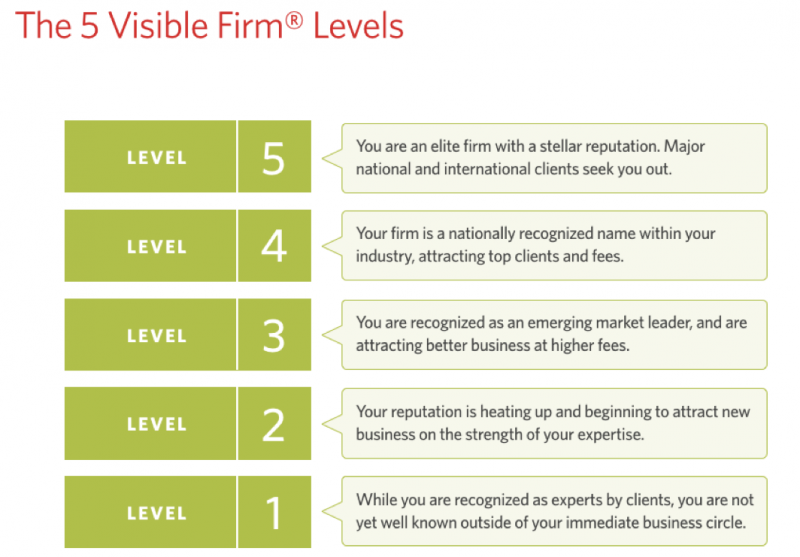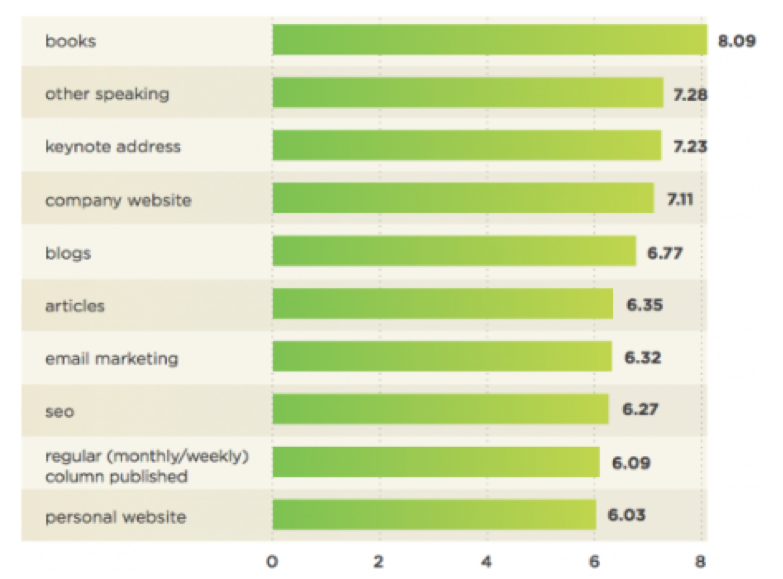Guest Contributed by Elizabeth Harr
In a recent article, I talked about the steps required for creating your personal brand strategy.
In this article, I’ll cover how to design the supporting tools and infrastructure you’ll need to really bring your brand to life in a differentiated fashion.
Tool #1: Media Kit. I see this quite often – executives trying to get placements as a keynote speaker or panelist, but to no avail. Often times, firms overlook the importance of a media kit – a go-to place where speaking committees can easily access downloadable headshots, bios of different lengths, and access to published work or speaking samples. More than that though, a media kit is a vetting committee’s window into what their audience might experience in their exposure to you as an expert. For that reason, as the development of your personal brand strategy progresses, consider assembling public speaking clips into a video reel – it need only be a few minutes long, but this really gives speaking committees a sense of how you command the stage. It also gives prospective clients an excellent idea of what it might be like to work with you.
Tool #2: Polish up your bio and website. Boost the credibility of your bio and website by adding such features as recent articles and presentations you’ve made, as well as any recognitions you’ve received or awards you’ve won — basically, whatever could help convince your audience that you’re the genuine article, and worthy of their limited time.
Tool #3. Get ready to blog. Here again, your path depends on your level of independence. If you’re with a firm that has a blog, learn how you can become a regular contributor. If you need approval from others in the organization, explain your goal, and then work with the people who can help you get exposure. If you’re setting up your own blog, find and invest in the resources you need to make it happen. Why a blog? A well-written blog allows open access (i.e. no one has to give you an email in exchange for reading your blog) to your personal brand – it’s the path of least resistance audiences will use to experience your expertise.
Tool #4. Add conversion tools. To turn web visitors and blog readers into leads (one of your key goals), offer them something that’s so compelling, they’ll provide their name and email address in exchange for it. Typically, this is a more substantial type of content, such as an educational guide, whitepaper or e-book. After you create this content, place it behind a registration form on your site or blog. Make sure to include an enticing downloading offer to readers (see example at right). To be on the safe side, consider including language with your form explaining that the reader will be receiving additional emails containing valuable educational materials and advice — and that they can cancel at any time.
Tool #5. Customize your profiles on social media. Start by completing your LinkedIn profile, which is by far the most important platform for professional services experts. Next, look for active groups to join that people in your target audience tend to frequent. Twitter is another platform to consider joining, as it can help you promote your content. In some cases, Facebook, YouTube and other platforms may be helpful as well, although our research shows that most experts focus their limited time and effort elsewhere.
Tool #6. Practice and grow your skills. Make a habit of working on your new skills by carving out a little time every day to work on one or two pieces at a time. Remember, this is a business commitment, not a hobby. That means it’s not only okay, but actually important, to devote part of each workday to upgrading your personal brand. It’s an ongoing project — and one that will never end.
Now, It’s Launch Time!
Now it’s time to give your plan one more read — and then, dive in! Implementing it will be slow going at first, but it’s important to get your tools and resources in place before you set out. If you are an expert who seeks to become a leader in your industry, the roadmap I’ve laid out here can help you get on the right path, and keep on it.
The secret to launching a successful personal branding strategy is to break down the work into manageable pieces. Little by little, you will start to see results — a few email inquiries starting to arrive, a speaking opportunity or two popping up, and hopefully, a growing tide of new followers. At some point, people will begin asking to meet with you to discuss their particular challenge. And eventually, a few will decide to hire you and your firm — based on nothing more than your reputation and visibility. Take it from me: seeing that steady progress will make all the hard work more than worth it.
You’ve got your strategy, now put it to work!
About the Author
Elizabeth Harr, Partner at Hinge, is an accomplished entrepreneur and experienced executive with a background in strategic planning, branding and growth for professional services. Elizabeth co-founded a Microsoft solutions provider company and grew it into a thriving organization that became known for its expertise in Microsoft customer relationship management.
The opinions and views expressed by guest contributors are their own and do not necessarily reflect those of theglasshammer.com




